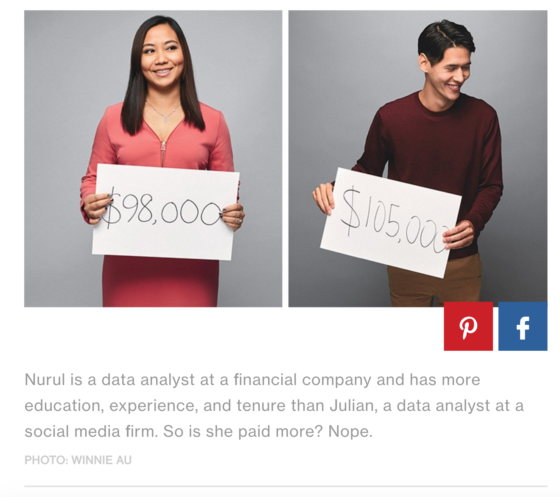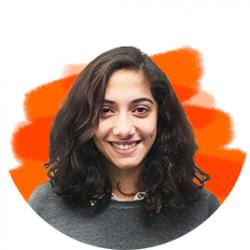Why should employers care about the gender pay gap?

Businesses do not profit from the gender pay gap. It hurts them. But, the way the gender pay gap is framed by activists hurts the equal pay cause. That’s because the gender pay gap debate runs on the wrong currency: emotion. Instead of paying employees fairly because society says it’s the right thing to do, companies should be paying employees fairly because they can’t afford not to.
Here’s the business case for narrowing the gender pay gap:
The gender pay gap costs companies
The gender pay gap is difficult to measure. The gap is falsely framed as too big to fix, so half-hearted attempts to address it abound. These include flashy announcements on Equal Pay Day, and disingenuous reports of pay equity. But, the gap cannot be whittled down to simplistic phrases, like “women earn 77 cents for every dollar men earn”, or “equal pay for equal work.”
These dramatized slogans don’t capture the finer points of the gender pay issue because:
- They don’t compare equal work. The numbers compare men and women of different jobs and pay-grades (e.g.: higher-paid software engineers to lower-paid truck drivers.)
- They don’t consider gender occupational segregation. The more female-dominated a field is, the lower its wages – and the gap grows as women and men climb the ranks.
- They represent old data. Recent research shows that younger women (ages 25-34) are closing the gap, which is about 90 cents for every dollar a man makes.
Still, wage gaps exist, even when comparing both genders in the same professions. Glamour magazine invited 12 people to its offices last year to discover the gap for themselves. Six pairs of men and women with similar jobs, titles and experience levels wrote down their salaries on large cards and “on the count of three” flipped their cards over to show to each other. Though this experiment was small and unscientific, it revealed poignant differences:
“In the silence afterward, you could feel the tension,” Liz Brody of Glamour wrote. “Nurul, one of the data analysts, looked around at the cards. “Almost all of us women,” she remembers thinking, “have the lower salary.”

Individuals suffer from the wage gap. And while the math is messy, the cost for individual companies is clear. Companies that don’t prioritize fair pay have to pay up in other big ways.
They end up with gaps in:
Performance
Companies that close the gender gap increase their skills diversity, collective intelligence and their bottom lines. Businesses with women in top management positions are more profitable. A study of 22,000 companies worldwide found that having at least 30 percent of women in the C-suite adds 6 percent to net profit margin.
Retention
Millennial women leave jobs for the same reasons men do. Those reasons include pay advancement, lack of meaningful work and the absence of learning and development programs. Fair pay, raises and bonuses communicate that you value all employees equally. Employees who feel valued are more likely to stay with their employer. Pay your people fairly to retain them and avoid wasting money on unnecessary turnover.
Branding
Your employer brand is your sharpest recruiting tool. Gender discrimination in the form of pay disparities can tank a company’s brand, in the form of Glassdoor comments, employee discrimination lawsuits and bad publicity. Paying people unfairly is a management blunder that affects your ability to attract good hires.
What employers can do about their gender pay gaps
Gender gaps grow gradually. CEOs rarely wake up one day and decide to discriminate with pay. Even Buffer, a company dedicated to salary transparency, was recently surprised to find out that it suffered from a gender pay gap.
Some companies can afford to spend millions on gap-closing initiatives. But there are simpler and cheaper ways to eliminate gender discrimination at all levels.
The single most important way to narrow the gap
End all questions about salary history
The salary history question is a divisive issue in the recruiting industry. Some recruiters feel this is a necessary question to ask:

But, there’s no other part of the hiring process where you assume a previous employer got things right. Employers independently assess references and credentials, regardless of whether a candidate’s previous boss did. Salaries should get the same treatment. Salary history questions keep women stuck in a lifetime of pay that is well below their market worth.
Katie Donovan, an equal pay consultant, firmly believes the salary history question perpetuates the pay gap:
“Every time an employer asks that question they have to take ownership that they’re growing the gap.”
Donovan helped author the Massachusetts equal pay law that bans employers from asking about previous salaries. The law, which goes into effect next year, will make it illegal for employers to ask “What is your current salary?” Savvy companies should follow suit, regardless of their state.
Other ways to narrow the gender pay gap
If you are an executive, hiring manager or business leader here’s what you can do:
- Offer all employees negotiation training. Some women are less likely to negotiate their pay, for fear of being perceived as aggressive or disrespectful. But negotiation skills help employees in all aspects of their work. Developing negotiation training workshops for employees and hiring managers will help them learn valuable skills and help them perform better in their roles.
- Adjust inequitable salaries. You don’t need to go big, like Salesforce did (by recently investing $3 million in closing their gap.) If you know you have a gender pay gap, take small steps to overcome it. Aim for pay equity one new employee at a time.
- Hire diverse leaders. Homogenous leadership teams leave companies prone to “groupthink” – when a workforce becomes so similar in its thinking that it closes the door on creativity. Groupthinking companies are less likely to challenge the gender pay gap status quo. Hire women to leadership roles -and pay them fairly- to fight groupthink, work smarter and attract diverse talent.
If you are a recruiter, here’s what you can do:
- Research market rates for salaries. Learn what’s fair compensation for the role you’re recruiting for. There are various ways to do this online.
- Be transparent about pay. List the compensation for each role either in the job description or in the first conversation you have with candidates. This will save you and your candidates time in evaluating whether the role is right for both parties.
- Promote gender-inclusive policies. Mentioning your company’s maternity and paternity benefits and remote work options, for example, may attract a more diverse candidate pool.
If you are an HR manager, here’s what you can do:
- Pull your salary data. Compile compensation reports of all people in each department to analyze how much men and women earn. These numbers may serve as a starting point for paying employees more equitably.
- Implement blind hiring. Unconscious biases cloud the hiring process. Gender bias is one of them. Consider blind hiring techniques that obscure your candidates’ genders to give every candidate a fair shot.
- Cultivate career-path programs. Building career paths for employees can help them grow within your organization. If a department suffers from a lack of gender diversity, consider career-pathing as a long-term solution to help close the pay and opportunity gap.
And, if you want to learn more about the gender gap debate, you can:
- Get acquainted with the gender pay gap. There are numerous resources that can help you understand the details of this issue. Here are a few:
- “What Works: Gender Equality by Design” A book by Harvard behavioral economist Iris Bohnet, about the unconscious biases and behaviors that hamper gender equality and business, and what companies can do about them.
- “What are Gender Barriers Made Of?”: A Freakonomics podcast that examines how the pay gap and gender stereotypes form.
- “Ask the Headhunter: Women don’t cause the pay gap. Employers Do”: A Silicon Valley headhunter squarely blames employers for the gender pay gap and debunks the myth that women are responsible for earning less.
- Aline Lerner’s blog for coverage on gender (and other) gaps in the technical recruiting world and our post on how tech recruiting is broken and how to fix it.
Many conversations about the gender pay gap take place on social media. Here’s a summary of Twitter perspectives on the gender pay gap. Most of them are compiled from Romper:
Women are underpaid for speaking engagements:
Spoke at a conference last year that paid everyone but me $5K-$15K. Told me they don’t pay speakers. Never again. https://t.co/3zGU01vBF5
— Melissa Perri (@lissijean) February 14, 2017
Women feel they are “damned if they do, damned if they don’t” when negotiating for more pay:
On #EqualPayDay, remember that simply telling women to ask for more $ is not enough – because when they do, they’re often penalized.
— Jessica Valenti (@JessicaValenti) April 4, 2017
Mothers feel the pay gap, too:
Mothers shouldn’t be punished — should be compensated for balancing motherhood &work. https://t.co/pNeW7rvs5Z #stoptherobbery #EqualPayDay pic.twitter.com/5j28KRu0j7
— Phumzile Mlambo (@phumzileunwomen) April 4, 2017
Women of color are at an even greater disadvantage compared to white men:
Women overall unjustly earn far less than men. For Women of Color, it is much worse.
Support programs that fight this injustice#EqualPayDay pic.twitter.com/grUCY6TLzv— Tony Stark 2017 ? (@1IronMan2017) April 4, 2017
The gender pay gap grows through a series of small, silent cuts. Any amount of well-researched resources and thoughtful social media conversations will only scratch the surface of the gender pay gap issue. But, awareness, and the drive to make small changes will go a long way in narrowing the gap. And they’re worth it. Because the rewards of an equally-paid workforce are huge. You’ll be a more equitable, diverse and profitable company if you narrow your gap and treat your female employees fairly.




